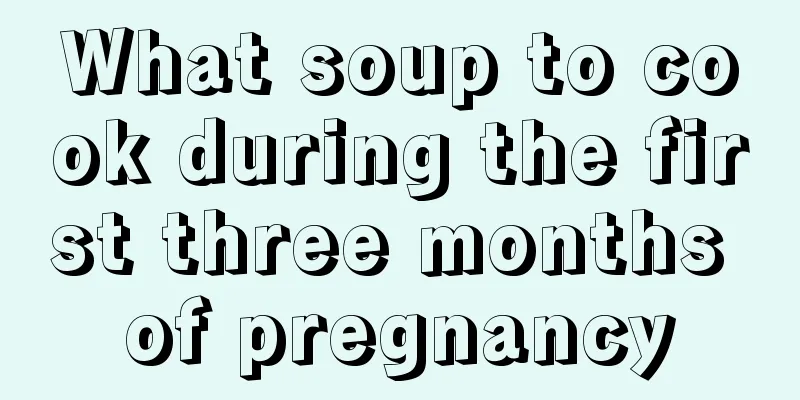What is the dangerous period on the 18th?

|
There are many cases of unmarried women getting pregnant during their dangerous period. If they are planning to have a baby, they do not need to take any contraceptive measures even during the dangerous period and can just give birth safely. However, if the woman is not well prepared to be a mother, she needs to take some contraceptive measures when having sexual intercourse. So when are the dangerous period for girls? When is the dangerous period for pregnancy on the 18th? Take a look at the detailed introduction of the article below. If your period comes on the 18th, subtract 14 days from the 18th, then the 4th of next month will be your ovulation period. The ovulation period, the 5 days before and the 4 days after, that is, the ovulation period, which is from the 28th to the 5th, is the dangerous period of pregnancy. Women's ovulation period is generally about 14 days before the next menstrual period. Starting from the first day of the next menarche, the last 14 days or minus 14 days is the ovulation period. The ovulation period plus the first 5 days and the last 4 days are called the ovulation period. Because everyone's menstrual cycle is different, the answer to how many days after menstruation is the ovulation period will also be different. 1. For women with relatively stable menstrual periods Generally it is the 14th day before the next menstrual period. Then the 5 days before this day, including this day and the 4 days after this day, are called the ovulation period. In other words, the ovulation period of ordinary women is ten days. 2. Women with unstable menstrual cycles If the menstrual cycle is unstable, the ovulation period can be calculated in this way: the first day of ovulation = the shortest menstrual cycle minus 18 days, and the last day of ovulation = the longest menstrual cycle minus 11 days. The calculation method is to use the first day of menarche as the reference point and count the days backwards. How many days after ovulation can I test whether I am pregnant? After fertilization, the egg takes 4-5 days to travel from the fallopian tube to the uterus and stays in the uterus for 3-4 days. This process takes a total of 7-9 days. Therefore, if you use a more sensitive (15 international units) early pregnancy test kit and have sex about 7 days after ovulation, and use a regular pregnancy test strip (25 international units) to measure HCG about 12 days after ovulation, it is very normal and effective. |
<<: Do I need to fast for the 42-day postpartum checkup?
>>: Suitable for girls to exercise at home
Recommend
Why do women experience pain when pressing their lower abdomen?
There are many important organs of our body in th...
Can a woman with kidney deficiency get pregnant?
If women suffer from kidney deficiency, it is bes...
Can I eat apples during my period?
Can you eat apples during menstruation? This is a...
Is it normal to bleed after 17 days of medication?
Everyone should know about medical abortion. Medi...
Does smoking affect your appearance? It’s true!
Does smoking affect your appearance? You may answ...
World Cerebral Palsy Awareness Day | What to do if your baby has cerebral palsy? Remember the "12-word formula"
Text: Zhai Hongyin, doctor of Pediatric Rehabilit...
What is the postoperative care after hysterectomy?
The uterus is a very important reproductive organ...
What should women pay attention to when maintaining their beauty rather than their heart?
Many female friends are particularly concerned ab...
Chitosan Gynecology
Gynecological inflammation is a common problem fo...
Can mastitis be treated with hot towels?
Whether during or after giving birth, women will ...
Why does the skin around the eyes age faster than the skin on the face?
Some people say that to see whether a woman is ol...
What causes vaginal burning and itching?
I believe that most women have experienced the pr...
HPV vaccination: On the road to eliminating cervical cancer (Part 1)
Cervical cancer is the second most common cancer ...
Weekly chart of pregnancy development
Pregnancy is like a "travel". Once you ...
What is the reason for irregular menstruation at the age of 44?
When a woman is 44 years old, in fact, for many f...









